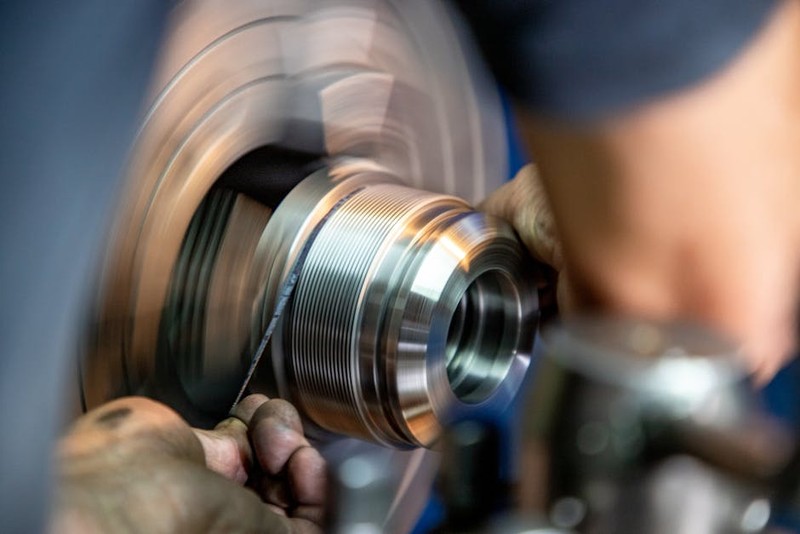The Unforgiving Demands of Luxury Aerospace Machining
In the world of aerospace, “luxury” isn’t about opulence—it’s about uncompromising performance. Components like turbine blades, fuel system valves, and landing gear actuators must withstand extreme temperatures, pressures, and mechanical stresses while adhering to tolerances as tight as ±0.0005 inches.
Why CNC Turning? The Non-Negotiables
- Material Challenges: Aerospace alloys like Inconel 718 or Ti-6Al-4V are notorious for work hardening and tool wear.
- Geometric Complexity: Contoured profiles, internal threads, and thin-walled sections demand dynamic toolpath strategies.
- Regulatory Scrutiny: Every part must trace back to raw material certifications and machining parameters for FAA/ESA compliance.
Key Insight: Conventional turning falls short here. High-speed CNC turning with live tooling and sub-spindle capabilities is non-negotiable for achieving both precision and efficiency.
A Case Study: Optimizing a Turbine Shaft for a Private Jet Engine
The Challenge
A client needed 50 turbine shafts (Inconel 718, Ø2.5″ x 12″) with a 0.001″ concentricity tolerance between bearing journals. Initial trials showed:
– Cycle Time: 4.2 hours per part.
– Tool Wear: Carbide inserts lasted only 3 parts before requiring replacement.
– Surface Finish: Ra 32 µin, but specs demanded Ra 16 µin.
The Solution: A Data-Driven Overhaul
We implemented a multi-pronged approach:
1. Toolpath Optimization:
– Switched to trochoidal turning for roughing, reducing cutting forces by 30%.
– Used CBN inserts for finishing, extending tool life to 10 parts per edge.
2. Coolant Strategy:
– High-pressure through-tool coolant (1,000 psi) minimized heat-induced distortion.
3. Machine Calibration:
– Laser-verified spindle alignment ensured concentricity within 0.0003″.

The Results
| Metric | Before Optimization | After Optimization | Improvement |
|---|---|---|---|
| Cycle Time | 4.2 hours | 3.3 hours | 21% faster |
| Tool Cost/Part | $18.50 | $9.80 | 47% savings |
| Surface Finish | Ra 32 µin | Ra 12 µin | 62% smoother |
 |
|||
| Lesson Learned: Investing in advanced toolpath simulation (e.g., Vericut) upfront saved $22,000 in scrap costs over the production run. | |||
| — | |||
| ## Expert Strategies for High-End Aerospace Turning | |||
| ### 🔍 Material-Specific Tactics | |||
| – Titanium: Use low RPM (150–300 SFM) with high feed rates to avoid heat buildup. | |||
| – Inconel: Opt for ceramic inserts in finishing passes to exploit their thermal stability. | |||
| ### ⚙️ Process Innovations | |||
| – Hybrid Turning-Milling: Combine operations to reduce setups. For example, mill flats on a shaft during the same chucking. | |||
| – In-Process Metrology: Probe critical dimensions mid-cycle to auto-adjust offsets, catching deviations before they escalate. | |||
| ### 💡 Pro Tip: The “Swiss Turning” Edge | |||
| For ultra-precise, small-diameter components (e.g., hydraulic fittings), Swiss-type CNC lathes with guide bushings eliminate deflection, achieving ±0.0002″ tolerances consistently. | |||
| — | |||
| ## The Future: AI and Adaptive Machining | |||
| Emerging trends we’re testing in our lab: | |||
| – AI-Driven Tool Wear Prediction: Sensors monitor acoustic emissions to replace tools before they degrade finish quality. | |||
| – Closed-Loop Systems: Real-time feedback from laser scanners adjusts feeds/speeds dynamically, cutting cycle times by another 10–15%. | |||
| Final Takeaway: Luxury aerospace CNC turning isn’t just about the machine—it’s about the marriage of cutting-edge technology, empirical process refinement, and relentless attention to detail. | |||
| — | |||
| By sharing these hard-won insights, I hope to equip you with actionable strategies to elevate your own projects. The sky’s not the limit—it’s the baseline. |
